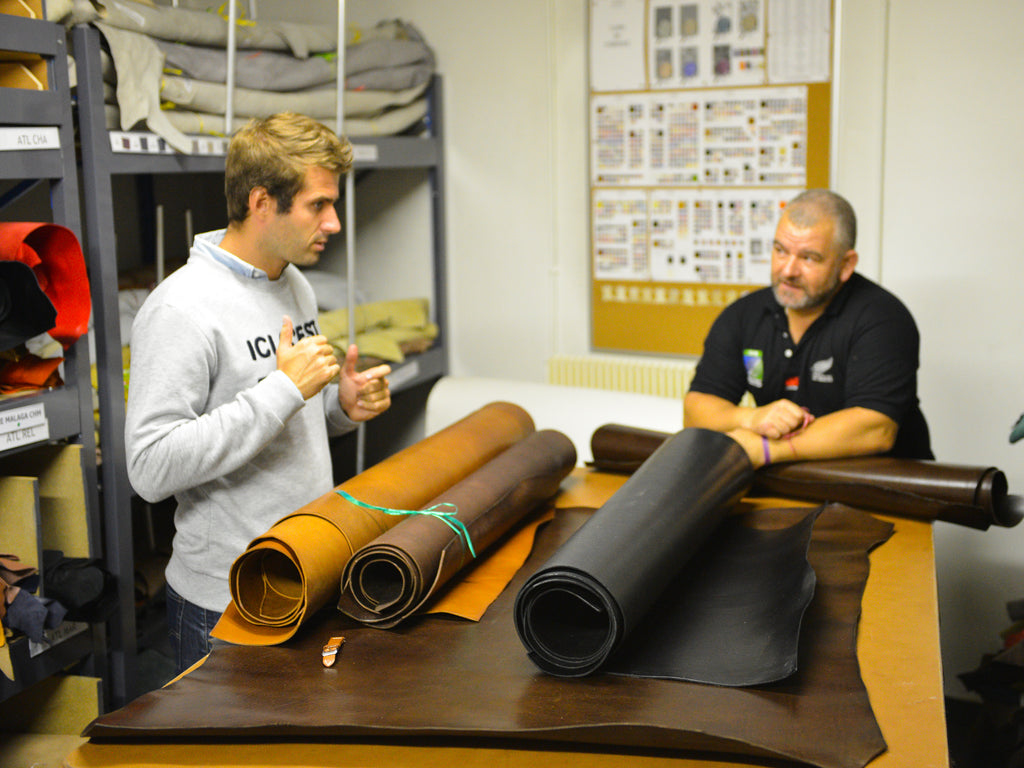Vegetable tanning and mineral tanning, what's the difference? For some of our watch straps, we use vegetable-tanned leather. This process, although ancient, is still little known to the general public, but fear not, Charlie Paris is here to explain to you how this type of leather is obtained.
1. But what is vegetable tanning?
Tanning is the process of transforming animal skins into soft, durable, rot-proof and water-resistant leathers.
Vegetable tanning is the first tanning method used by humans, and this process was widely used in the Middle Ages. Before being tanned, the hide undergoes some alterations.
It is first salted or dried in order to be preserved. The latter is then rehydrated and peeled in order to remove hair and subcutaneous tissue. The skin is finally ready to be tanned! For the skin to transform into leather, it is immersed in large vats saturated with tannin. The vegetable tanning process therefore uses tannins; these are substances of organic origin present in the bark, sap, leaves or even roots of plants. When in contact with animal skin, these tanning agents transform it into leather.
The leather, now tanned, undergoes two more stages: curing and finishing, which allow the desired thickness and finish of the leather to be obtained depending on its future use.
While the process could take several months or even years in the early days of this practice, the vegetable tanning used today lasts between 1 and 2 days. Today, unlike in the early days of the tanning industry, the vats are much more saturated with tannin, which speeds up the process. By using only products from the biosphere, vegetable tanning is a method considered more environmentally friendly, as is the case with vegan leather.
Vegetable-tanned leather will have beautiful natural hues that will develop a patina and take on a unique color over time. Vegetable tanning produces leathers that are slightly stiffer and firmer, unlike ostrich or chrome-tanned leathers. However, it will have a softer, silkier feel.
As you will have understood, vegetable tanning is not to be confused with vegan leather, which is not of animal origin. It is a textile imitating leather that is created thanks to the fibers contained in certain plants, the most well-known of which are pineapple leaves or eucalyptus fibers. However, the term vegan leather remains a misnomer and a beautiful oxymoron. The term "leather" is protected by a decree which stipulates that the leather must necessarily come from animal skin.
2. What about chrome tanning?
Vegetable tanning isn't the only method for tanning leather. The most common technique is mineral tanning or chrome tanning. In fact, more than 85% of the world's tanned hides are produced using mineral tanning, a process developed in the late 19th century using mineral tannins, primarily chromium sulfate. This process is widely used because it tans leather much more quickly than vegetable tanning; it only takes a few hours for the mineral tannins to transform the hide into leather.
The advantage of chrome-tanned leather is that it won't move, and the color won't change over time. Another major advantage of chrome tanning is that you can apply brighter colors to the leather, like some of our straps.

Read more

Through this article, Team Charlie Paris is happy to present to you this iconic artist and the fruit of our collaboration.

We participate in the circular economy, so that used watches do not contribute to accelerating pollution but on the contrary are valued to be used differently.





































